<< Previous | Displaying results 2981-2990 of 6816 for "" | Next >>
A Romani (Gypsy) victim of Nazi medical experiments to make seawater safe to drink. Dachau concentration camp, Germany, 1944.
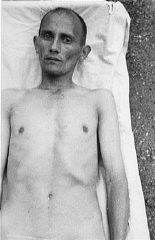
Romani (Gypsy) survivors in a barracks of the Bergen-Belsen concentration camp during liberation. Germany, after April 15, 1945.
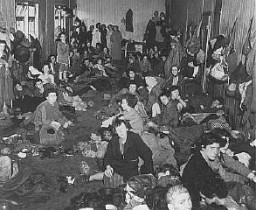
Buses that transported patients from the Eichberg hospital near Wiesbaden to the Hadamar euthanasia center, where the patients were gassed or killed by lethal injection. Germany, between May and September 1941.
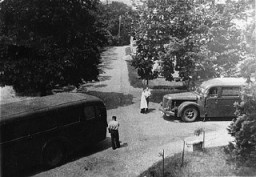
View of Bergen-Belsen concentration camp after the liberation of the camp. A row of small tents has been pitched outside the barracks. A group of survivors huddles in front of one of the tents.
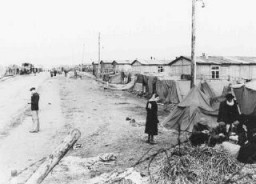
A view of the Bergen-Belsen concentration camp after the liberation of the camp. Bergen-Belsen, after April 15, 1945. The 63rd Anti-tank Regiment and the 11th Armoured Division arrived at the Bergen-Belsen concentration camp on April 15, 1945. When British troops entered the camp, they were totally unprepared for what they found. Inside were about 55,000 prisoners, many of whom were emaciated and ill and in desperate need of medical attention. Thousands of corpses in various stages of decomposition lay…
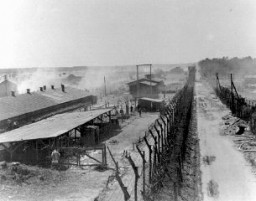
Crematorium oven used in the Bergen-Belsen concentration camp. Photograph taken after the liberation of teh camp. Bergen-Belsen, Germany, April 28, 1945.
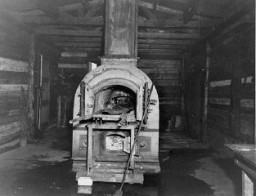
The remains of a crematorium at the Bergen-Belsen concentration camp. This photograph was taken after the liberation of the camp in 1945. Bergen-Belsen, Germany, date uncertain.
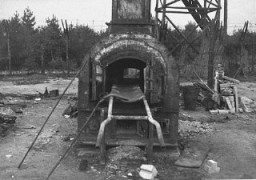
After camp liberation, one of the mass graves at the Bergen-Belsen camp. Germany, after April 15, 1945.
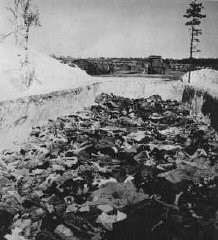
After liberation of the Bergen-Belsen camp, British soldiers forced German mayors from nearby towns to view mass graves. Bergen-Belsen, Germany, after April 15, 1945.
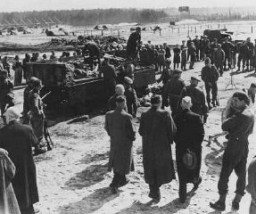
A British soldier watches women SS guards who were forced to carry victims' corpses to mass graves. Bergen-Belsen, Germany, after April 15, 1945.
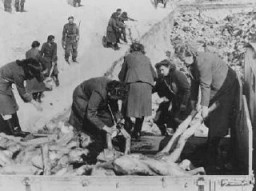
We would like to thank Crown Family Philanthropies, Abe and Ida Cooper Foundation, the Claims Conference, EVZ, and BMF for supporting the ongoing work to create content and resources for the Holocaust Encyclopedia. View the list of donor acknowledgement.